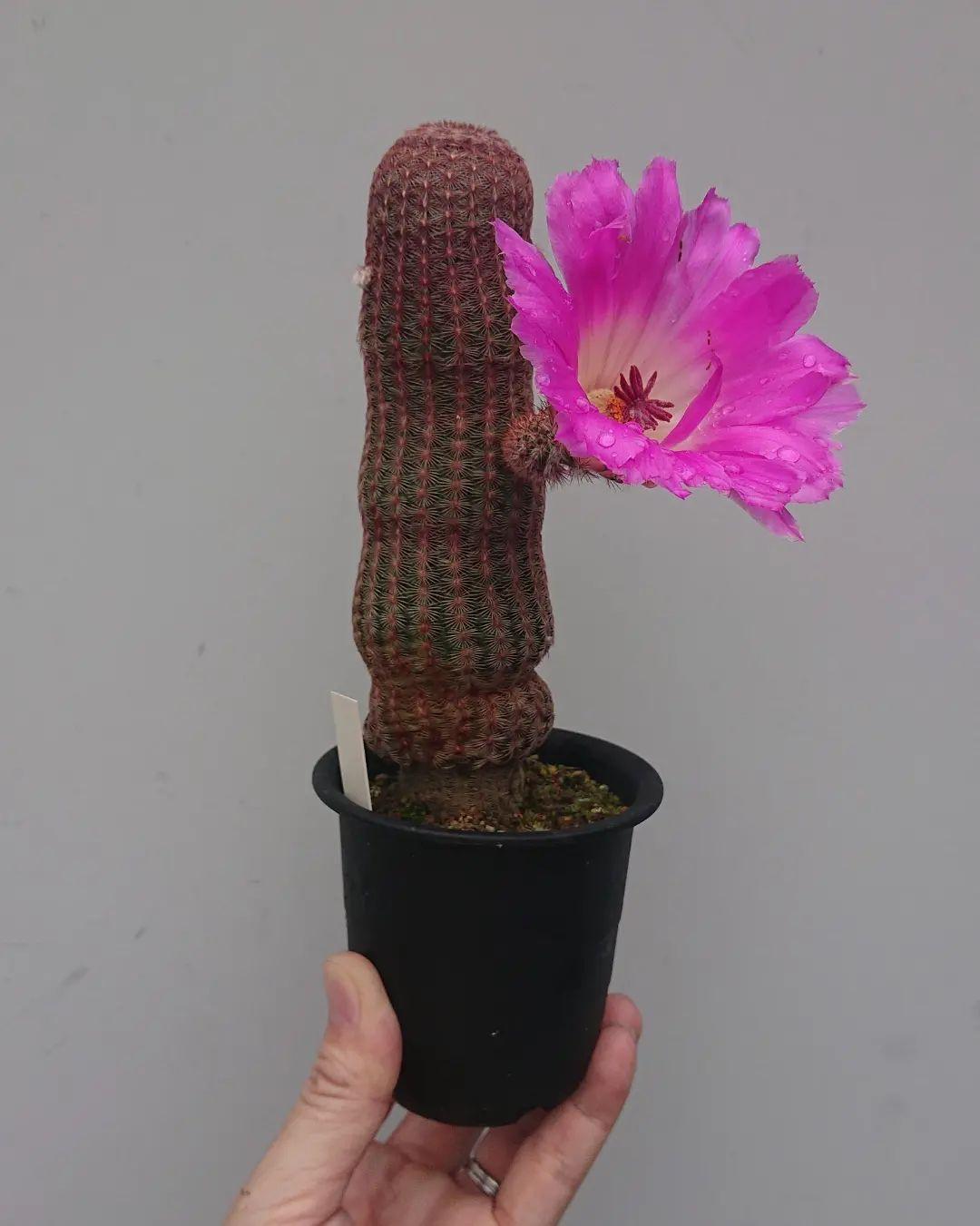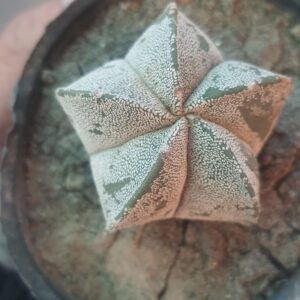“The Desert JewelThe Rainbow Cactus (Echinocereus rigidissimus)
One of the most aesthetically pleasing cacti in the succulent kingdom is the Rainbow Cactus, whose scientific name is Echinocereus rigidissimus. This species, which is indigenous to the southwestern United States (Arizona, New Mexico) and northern Mexico, is well known for its vibrant, colorful bands of spines that encircle its cylindrical form, creating the illusion of a rainbow or candy-striped appearance.
The Rainbow Cactus is prized for its vibrant appearance, remarkable springtime blooms, resistance to dry environments, and comparatively small growth form. If cultivated properly, this cactus is a fantastic option for both collectors and gardeners who are looking for a statement plant that needs minimal upkeep.
The Plant Kingdom
Scientific Name: Echinocereus rigidissimus
Common Names: Red-headed Hedgehog Cactus, Arizona Rainbow Cactus, Rainbow Cactus
Cactaceae is the family.
Native Range: Northern Mexico (Chihuahua and Sonora), Arizona, and New Mexico
Habit of Growth: solitary, erect cylindrical cactus
Size:
Height: 10–30 cm (4–12 inches)
5–10 cm (2–4 inches) in diameter
Hardiness Zones for the USDA: 9–11
Flowers
When It Blooms: From the end of spring until the beginning of summer
Appearance:
big, funnel-shaped blooms
Bright magenta to pink with yellow centers for colors.
Normally between 8 and 10 cm (3 and 4 inches) wide
Flowers bloom during the day and shut at night, lasting for many days.
Requirements for Light
Sunlight:
For the best expression of the brilliant spine colors, it favors full sun.
For the best color development, it needs 6–8 hours of direct sunlight every day.
A little afternoon shade may help avoid roasting in really warm weather.
Inside:
Put it close to a window facing south.
If needed, add grow lights.
Bright light helps keep the plant compact and makes the rainbow bands on the spines stand out more.
Humidity and temperature
Temperature:
Optimal temperature range is 20–35°C (68–95°F).
If the soil is dry, it may survive temperatures as low as -6°C (20°F).
Susceptible to prolonged cold and frost, which might harm the roots or stems
humidity:
Favors low humidity
Excessive humidity might cause rot or fungal problems.
Make sure there is enough air circulation, particularly in rainy or humid areas.
💧 Watering Procedure
Growing Season (from spring to early fall):
Water thoroughly, but let the soil dry completely between applications of water.
Less frequently in colder or more humid climates, usually every 10 to 14 days
Winter Dormancy:
Monthly or less water use
To prevent root rot during the chilly months, make sure the soil remains primarily dry.
The most frequent reason for failure in this species is overwatering.
The Needs of the Soil
Type:
Needs really well-draining soil
Suggested combination:
a mixture of 50% cactus and succulent
25% grit or coarse sand
25% pumice or perlite
pH: Between 6.0 and 7.0, which is considered neutral to somewhat acidic.
Stay away from soils that are heavy or retain moisture, as this might cause rot.
Fertilizing
During Active Growth:
Use a cactus fertilizer with a low nitrogen content (e.g., 5-10-10) every four to six weeks.
To prevent salt buildup, use diluted fertilizer.
Inactive Season:
No fertilizer is necessary.
Maintenance and trimming
Pruning:
Except for the removal of dead blossoms or wounded tissue, no pruning is necessary.
Pest Control:
Sometimes vulnerable to:
Mealybugs
Spider mites
Scale insects
Use insecticidal soap or neem oil to treat pests.
Make sure there is adequate airflow to avoid the formation of fungi.
🌿 Propagation
Through Seeds:
Seeds are the primary method of reproduction for this species since it seldom produces offsets.
Plant seeds in a well-draining, slightly moist mix that is maintained at a temperature of 20–25°C (68–77°F).
Germination may occur over the course of weeks or months.
Seedlings require strong, indirect light.
Although seed propagation is a gradual process, it enables the reproduction of this less common cactus variety.
🛡️ Frequent Problems
Root Rot: Caused by excessive watering or inadequate drainage
Etiolation (Stretching): Caused by a lack of light
Mealybugs, spider mites, and scale are the pests.
Regular inspection and a rigorous watering regimen are essential for long-term health.
🎍 Use for decoration
Ideal for:
gardens of rocks
landscaping with a desert motif
Container gardening
Exhibits on windowsills
It stands out visually even when not in bloom due to its vibrant spines.
Conclusion
The Rainbow Cactus (Echinocereus rigidissimus) is a stunning, multicolored cactus that requires little maintenance and provides beauty throughout the year. With full sunlight, well-draining soil, minimal irrigation, and the right temperature, you may appreciate its bright colors and spectacular flowers for many years.”
rainbow cactus
₨1,200.00
“The beautiful rainbow cactus (Echinocereus rigidissimus), also known as the Arizona rainbow cactus, is found in the wild throughout northern Mexico and the southwestern United States. Its lively, colorful spines are arranged in amazing bands of pink, red, yellow, and white that wrap around its cylindrical body, giving it a “”rainbow”” effect.
This cactus, which is slow to grow and solitary, needs sandy soil that is well-drained and direct sunlight to flourish. It needs very little watering and can survive droughts, particularly during the colder months. Its aesthetic value is enhanced by its large, vibrant pink to magenta blooms with brilliant centers that bloom in late spring to early summer.
Due to its small size, vibrant colors, and spectacular blossoms, the Rainbow Cactus is a popular choice among collectors and desert gardeners, making it ideal for container gardening, rock gardens, and cactus displays.”





Reviews
There are no reviews yet.